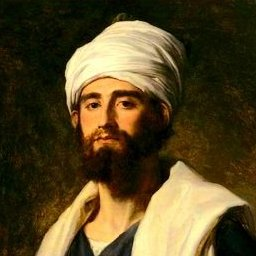1) Muḥyī al‐Dīn Maghribī (d.1283), was a Muslim astronomer and mathematician from Andalusia (Spain). He is most known for his works in trigonometry, Book on the theorem of Menelaus, Treatise on the calculation of sines. He also wrote three commentaries on Ptolemy's Almagest..1/6 



2) He belonged to the group of astronomers associated with the Maragheh observatory, most notably Nasir al-Din al-Tusi. In astronomy, Muhyi al-Din carried out a large‐scale project of planetary observations, which led to the development of several new astronomical parameters..2/6 

3) Before joining the Maragheh observatory, which was founded by the Mongol Ilkhanid dynasty in Iran, Muhyi al-Dīn had worked for King Nasir of Damascus. This relationship was ultimately cut short when the king was killed by the Mongols in the Siege of Aleppo conflict..3/6 

4) During his time at the observatory, the number of observations conducted by al-Maghribī was extensive, observing up to a total of eight of the brightest stars, of which he used the latitudes collected to compare with the values within ancient computations.... 4/6 

5) He concluded that the difference between his latitudes and ancients were not substantial, and any inconsistences were in fact due to the observations and not the subject itself. He commentates on Ptolemy's Almagest, presenting his own observations and hypothesizes with it..5/6 

6) He is also known for his commentaries on classic Greek mathematical works, in particular, his commentary on Book XV of Elements.
Muhyi al-Din died in Maragheh in modern-day Iran in June 1283 CE...6/6
#islam
Muhyi al-Din died in Maragheh in modern-day Iran in June 1283 CE...6/6
#islam

• • •
Missing some Tweet in this thread? You can try to
force a refresh


























